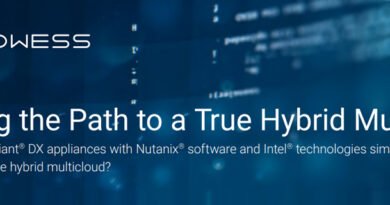Modernizing IT with Nutanix Enterprise Cloud and HPE GreenLake

The rise of the digital economy has been a primary driver for the adoption of public cloud services. As organizations become more dependent upon data for business success, IT must not only expedite service delivery, but must also place more emphasis on enabling the business to extract value from data. To that end, the digital economy has fundamentally changed the requirements for IT service delivery (as well as having changed the business perceptions about it). Organizations require IT infrastructure and services to be deployed faster—but those tasked with the job generally must achieve this ongoing objective with fewer resources. Why? Because increasing numbers of IT staff are now working with line-of-business teams to understand their technology needs.
Traditionally, IT has been tucked away in a room doing their own thing while trying their best to respond to every request coming from every corner of the organization, across all lines of business. But in today’s frenetic business environment, IT must be more visible within the organization. For IT to be efficient and agile, now more than ever, they need to understand the objectives and business demands of the various lines of business across their organization. Ongoing communication and collaboration can help IT quickly, easily, and reliably provide each line of business with the appropriate infrastructure to support their specific application and infrastructure requirements. By allowing this essential group to be more strategic, enabling them to collaborate with others and deliver value, organizations will be empowered to rise above the IT challenges of many traditional organizations. By leveraging a cloud-like service delivery/consumption model, organizations are better able to align resources to specific lines of business that have a wide variety of application and infrastructure demands (i.e., sales, marketing, HR, finance, etc.).
The Need to Focus More on the Business
While modern IT organizations may pride themselves on being technologically advanced, if they aren’t being responsive to the real-time needs of the business (i.e., understanding the requirements of lines of business throughout an organization), then all the technology investments won’t matter. To help the business succeed, modern IT organizations must transition from being technology-focused to being business-focused.



